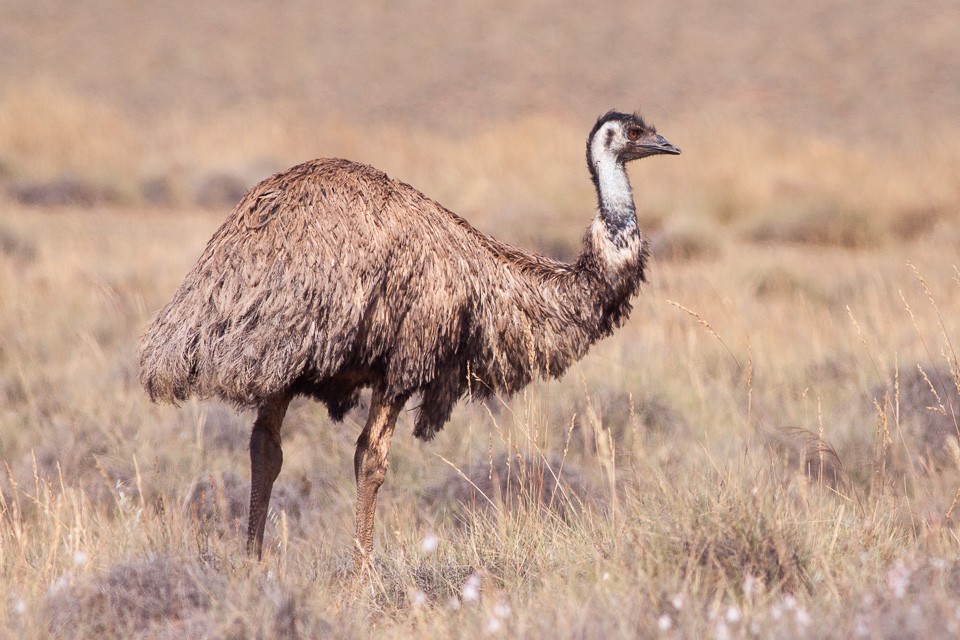Emu
A species of Emu Scientific name : Dromaius novaehollandiae Genus : Emu
Emu, A species of Emu
Botanical name: Dromaius novaehollandiae
Genus: Emu
Content
Description People often ask General Info
Description
Emus are the second-largest bird in the world, next to the Ostrich. They can't fly, but they have long, very strong legs and can run fast, up to 30 miles per hour, as well as swim if need dictates. Their call is a loud booming drumming/grunting sound. After laying eggs, the female emu plays no part in incubating or even raising the chicks—that is all left to the male emu.
Size
1.5 - 1.9 m
Life Expectancy
12-20 years
Nest Placement
Ground
Feeding Habits
Emu forage by day, consuming various plants, insects, and arthropods based on seasonal availability. Preferred foods include acacia, casuarina, and grasses, with protein needs met by grasshoppers, crickets, and larvae, among others. They exhibit specific seasonal dietary preferences.
Habitat
Emu are found in diverse habitats, primarily savannah woodlands, sclerophyll forests, and grasslands, spanning various geographical regions with a preference for areas receiving over 600 mm of annual rainfall. They typically avoid harsh arid regions and densely populated areas. While some populations exhibit seasonal migration patterns, others display more sporadic movements, yet they commonly nest in locales ranging from grasslands and woodlands to heaths.
Dite type
Herbivorous
People often ask
General Info
Feeding Habits
Bird food type
Behavior
Emus are diurnal birds and spend their day foraging, preening their plumage with their beak, dust bathing and resting. They are generally gregarious birds apart from the breeding season, and while some forage, others remain vigilant to their mutual benefit. They are able to swim when necessary, although they rarely do so unless the area is flooded or they need to cross a river. Emus begin to settle down at sunset and sleep during the night. 
Distribution Area
Once common on the east coast of Australia, emus are now uncommon there; by contrast, the development of agriculture and the provision of water for stock in the interior of the continent have increased the range of the emu in arid regions. Emus live in various habitats across Australia both inland and near the coast. 
Species Status
In the 1960s, bounties were still being paid in Western Australia for killing emus, but since then, wild emus have been granted formal protection under the Environment Protection and Biodiversity Conservation Act 1999. Although the population of emus on mainland Australia is thought to be higher now than it was before European settlement, some local populations are at risk of extinction. 
